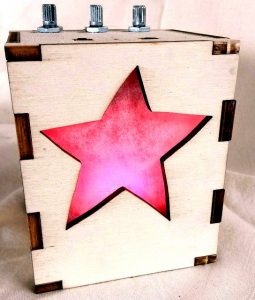5 projects to explore electronics
These projects are quick and fun for anyone to make. Spend time on decorating each project - or get straight into the electronics!
We particularly enjoyed playing with our Drawing Bot, and left our light-up Pohutakawa card on throughout the evening.
These projects accidentally teach you about positive and negative sides of a battery, LEDs, the use of resistors, and how to make a switch. You will also get competent at wiring up series circuits. You are welcome to these instructions for free - let us know how you went!
Project #1: Make a Drawing Bot
You will need:
- A plastic pot from your recycling
- Coloured paper, googly eyes, an assortment of craft to decorate your bot
- 1.5v hobby motor*
- AA battery holder*
- AA battery
- 2 x brass paper fasteners*
- Metal paperclip*
- At least 3 feltpens
- 3 wires*
- Tape, glue, scissors and possibly a sharp knife
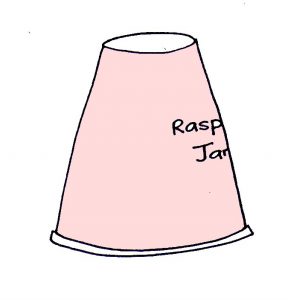
- Grab a (clean) plastic pot from the recycling.
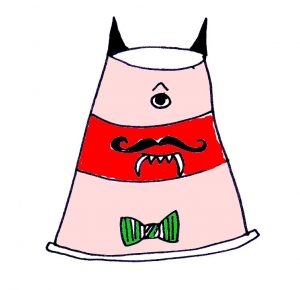
2. Decorate it as you please. We used paper and googly eyes. Here is Mr Moustache.
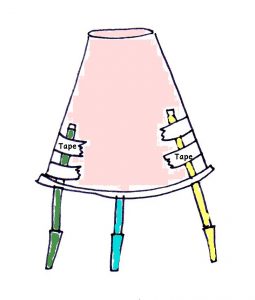
3. Tape felt tip pens around the sides. You need at least 3 for balance but go ahead and experiment with 4 or 5.
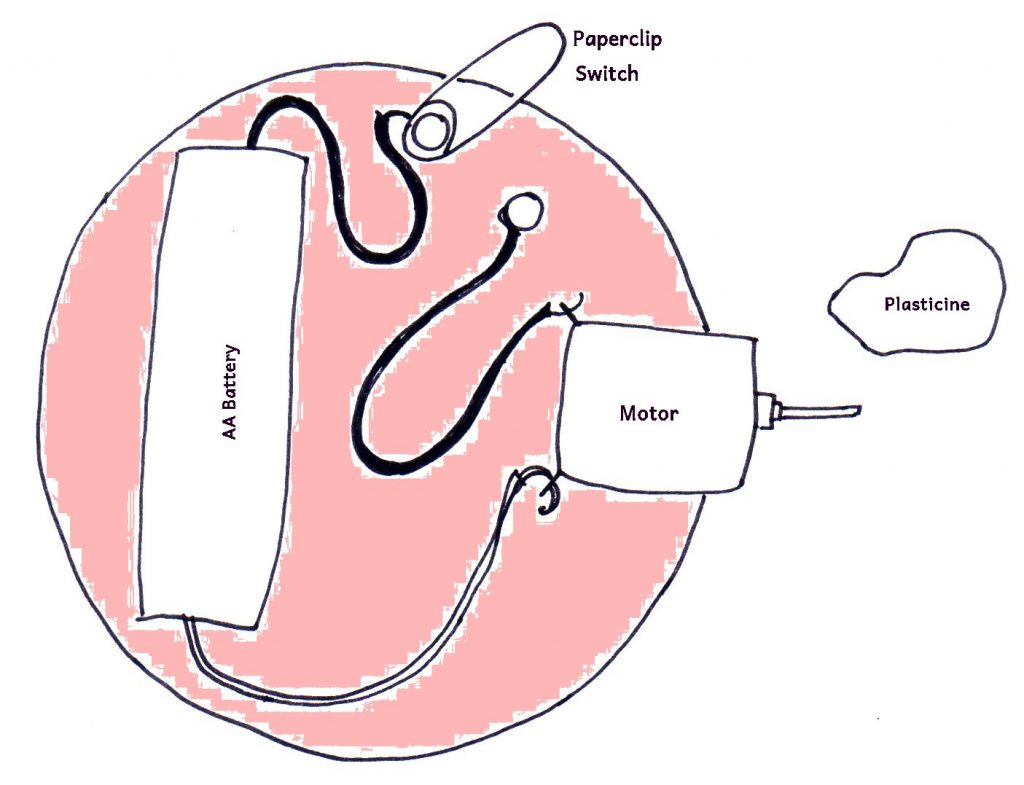
4. This is the circuit you need for the top of the Colourbot. You can either tape or hotglue the components on. We suggest tape because that means you can re-use your motor, wires, switch etc again.
NOTES: Notice that the motor end is sticking way off the top. This is so it's free to spin. You put the plasticine on here and can experiment with the shape. Make it long and thin or small and bobbly! See how this changes the way your Colourbot moves.
The brass paper fasteners need to go through your pot somehow (perhaps ask an adult to use a knife to punch slits through). The wires need to wrap around the brass fasteners so that when the paperclip is closed, the circuit is completed and your Colourbot will start drawing!
* These components included in our Explore Electronics kit.
project #2: Make a greeting card light up
You will need:
- Blank greeting card*
- Skewer*
- Coloured paper
- 2 brass paper fasteners*
- 1 metal paperclip*
- 2 red LEDS*
- 2 resistors (between 1-300 OHMS)*
- 3 wires*
- Tape, scissors, glue
- 3v button cell battery

- Use these shapes to make your Pohutakawa flower.


2. This is how to arrange them on your card. The black lines show you how to draw in the stamens.
3. Use a skewer to punch small holes above the flower. You can do as many as you like.
Make two small holes so you can push your brass paper fastener through. These need to be about the width of the paperclip. Thread the paperclip onto the head of the brass fastener so that it's held firmly. Leave the other side free. This will act as a switch to turn your lights on and off.
4. Twist a resistor around the positive (longer) leg of the LED. Repeat so you have two.
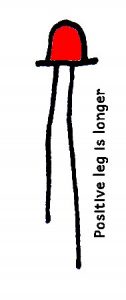
5. Open the card and tape the two LEDS and resistors like this across the punched out holes. Both positive legs twisted together and negative legs twisted together.
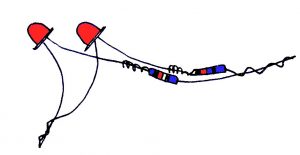
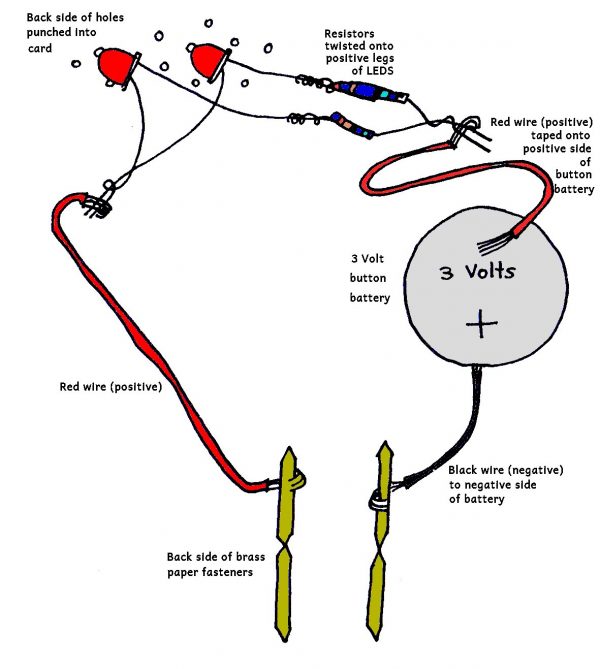
6. Here is the finished circuit on the inside of the card. Tape all the wires down - just ensure that metal is touching metal so the electric current can flow. When you "open" the switch, the current is broken and the lights go off. Closing the switch means the circuit is complete and those red lights shine!
*These components are included in our Explore Electronics Kit
project #3: Make a Jiggly jitterbee
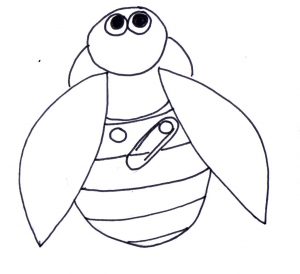
2. Decorate your pieces and then arrange like this. Glue or tape everything down. You will have one body piece extra, that goes underneath your bee - see next instruction.
You will need:
- Recycled cardboard (we used an old box)
- Coloured paper or pens, googly eyes* to decorate
- 4 large coloured paperclips*
- 1 small metal paperclip*
- 2 brass paper fasteners*
- 1 hobby motor 1.5 volts*
- 1 AA battery holder*
- AA battery
- Plasticine*
- Wire*
- Gluegun or tape, scissors
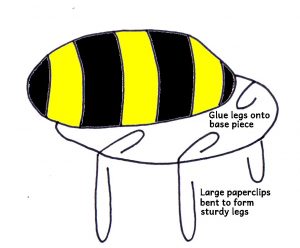
3. Make legs for your bug with large coated colour paperclips. Bend them open, like in the picture above. Glue or tape them onto the top of your under body piece. (We used a glue gun). Then glue your decorated body over the top. After this, make your switch (the brass fasteners need to go through both pieces of the body).
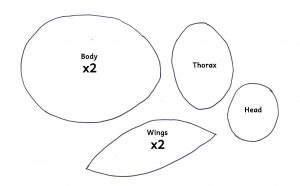
- Suggested template for your Jitterbee
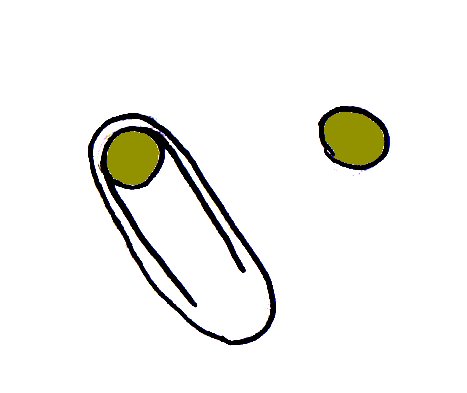
4. Make an on/off switch. Push two brass paper fasteners through the body of your bee. Link a metal paperclip over one side and ensure it is held firmly. When the paperclip touches both sides of the brass fastener, your circuit is complete.
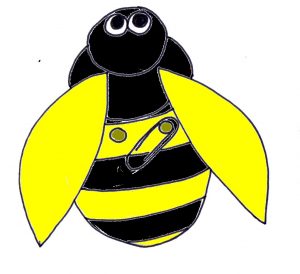
5. Top completed. Now do the circuit underneath.
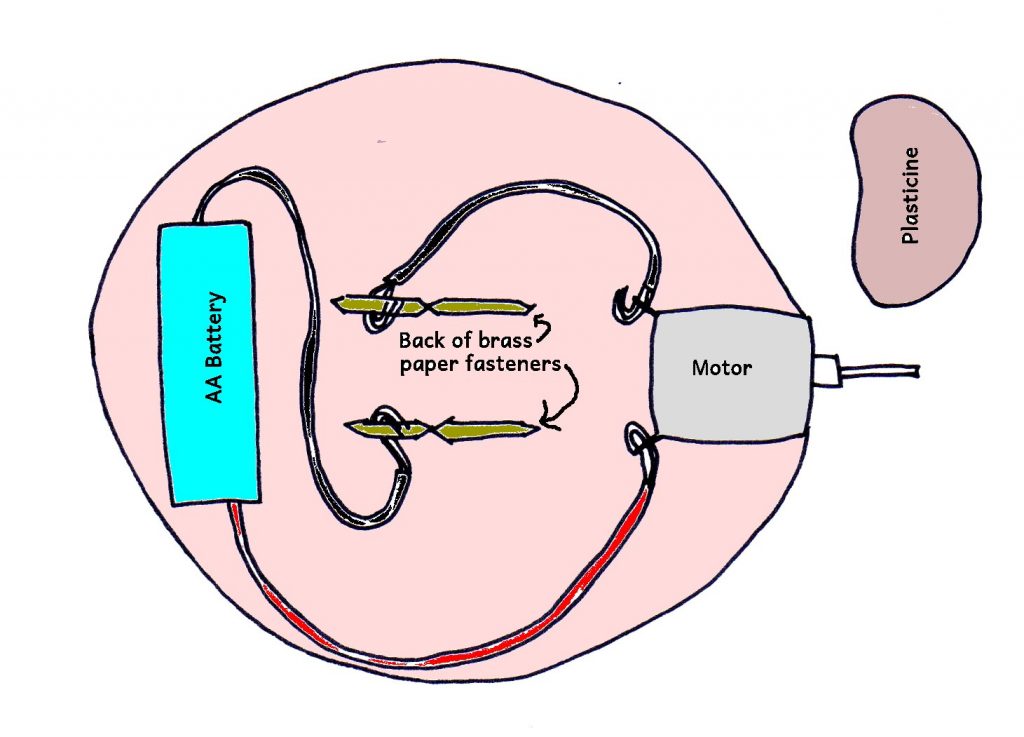
6. Wire up the circuit as shown. Tape everything down. Put the plasticine on the motor, close the switch and watch your Jitterbee jump around! If you have any issues with it not working, make sure that the metal ends of wires are all touching metal pieces properly. Then check that your battery works! Have fun - and keep your electronic bits. We will be releasing more ideas for these pieces so make sure you're signed up to receive our 5 Projects newsletter.
*These components are included in our Explore Electronics Kit
project #4: Make a Geometric Lamp
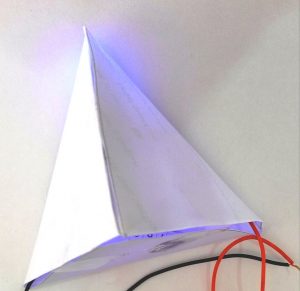
You will need:
- A4 piece of white paper
- 1 small metal paperclip*
- 2 brass paper fasteners*
- 2 LEDs*
- 2 resistors 1-300OHM*
- Wire*
- 3 volt button cell battery
- Glue, tape, scissors
1. Find a net or template for a geometric shape on the internet. We used a pyramid shape.
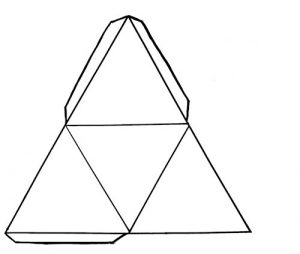
2. Wire up your LEDS and resistors the same way you did for the light up card project (see above). The Explore Electronics kit has enough LEDS and resistors to make both projects.

3. On one side of your shape, make this circuit. It is identical to the light up card circuit. Tape everything down. The switch goes on the outside of the shape so that once it's all glued together, you can easily turn your lamp on and off!
Remember that your red, or positive wires, go on the positive side of the battery. If you look carefully, every battery has a plus or minus on it to tell you which is positive and which is negative.
If you have issues with it not working, you need to check that metal touches metal - every wire and piece in the circuit needs to be touching another metal piece. If you think of a circuit as circle, you understand that it all has to connect to work. Your switch breaks the circle, that's when your lamp turns off.
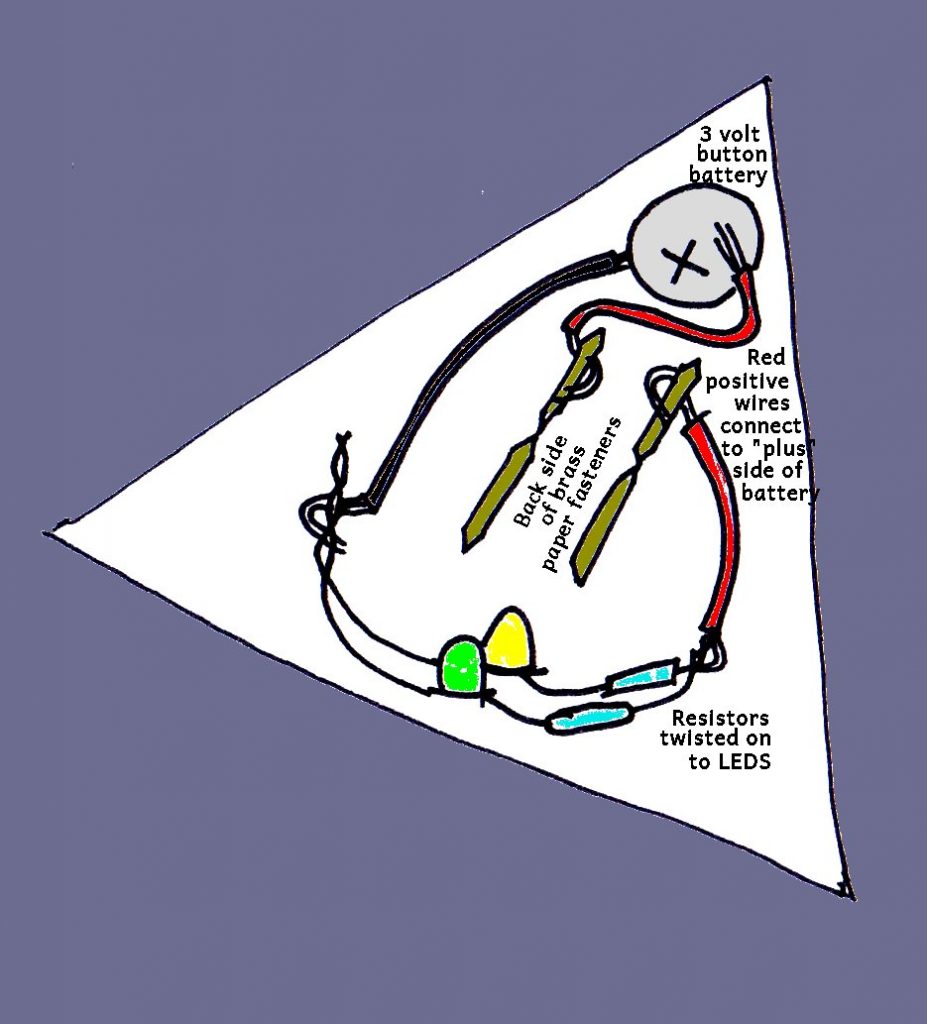
*These components are included in our Explore Electronics Kit
You will need:
- Wire*
- AA battery
- AA battery holder*
- Motor
Learn about what conducts electric current by setting up this circuit. Gather a collection of items from around the house such as: blunt knife, coins, pencil, key, business card, tomato, leaf, sandpaper.
Touch the two wires pictured to either end of your item. If the motor spins then you've got electric current going around your circuit and the item is a conductor.
Place the conductors in one pile and everything else in the other. The ones that don't conduct as known as insulators.
project 5#: Will it Conduct?
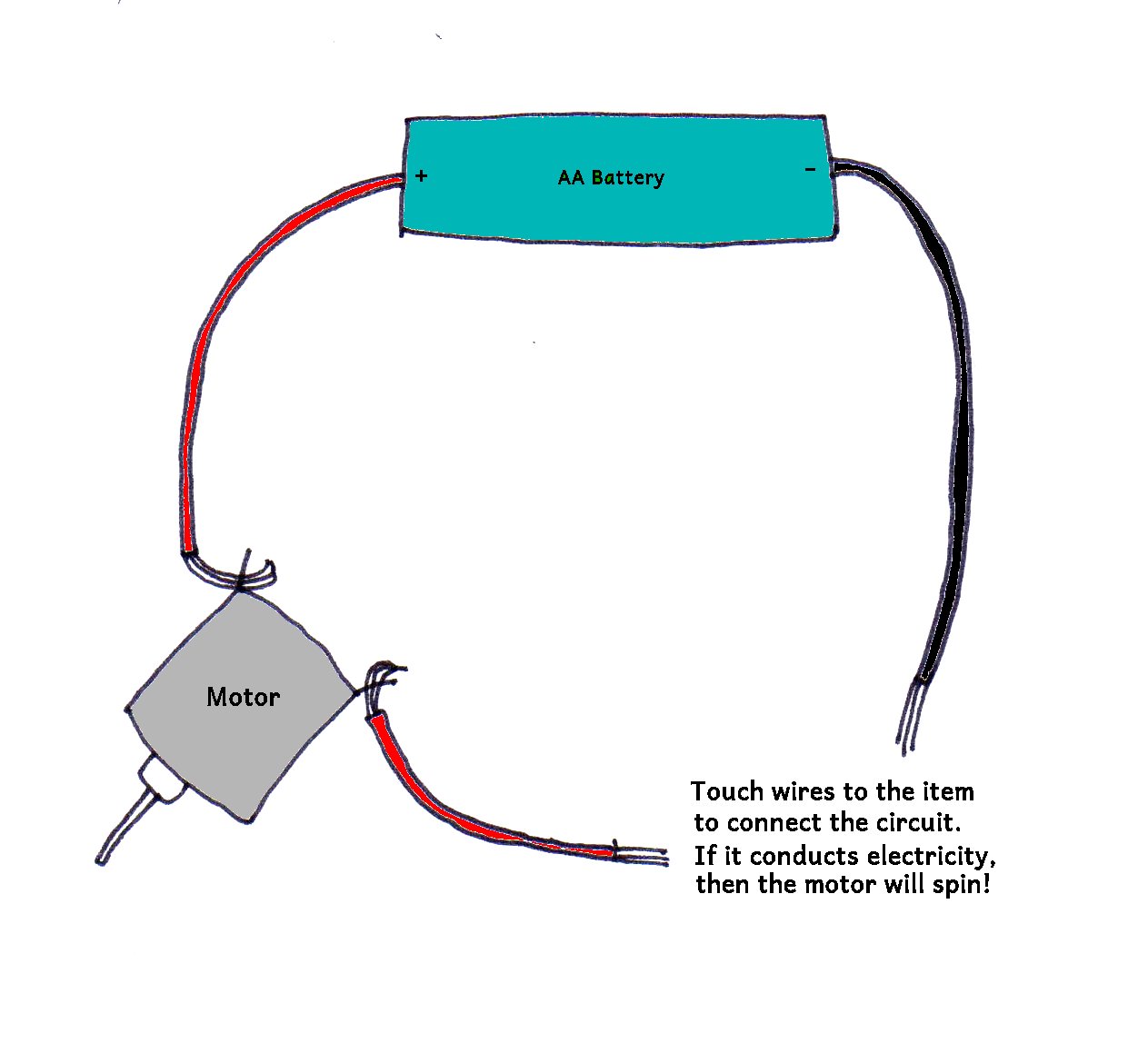
*These components are included in our Explore Electronics Kit
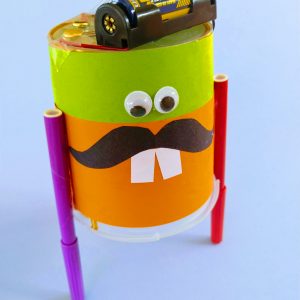
Buy the Explore Electronics kit
We've done the hard work and put the electronic bits and pieces you'll need, plus a few extras, into our Explore Electronics kit.
The kit enables you to make the first four projects at the same time (we assume you'll play around with conductivity then use those pieces to make the Jitterbee).
Buy now and get creating!

